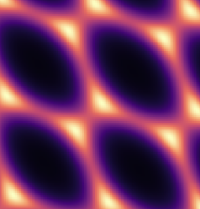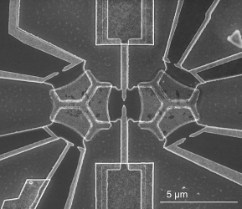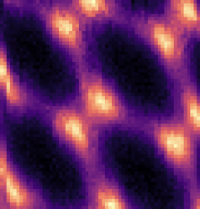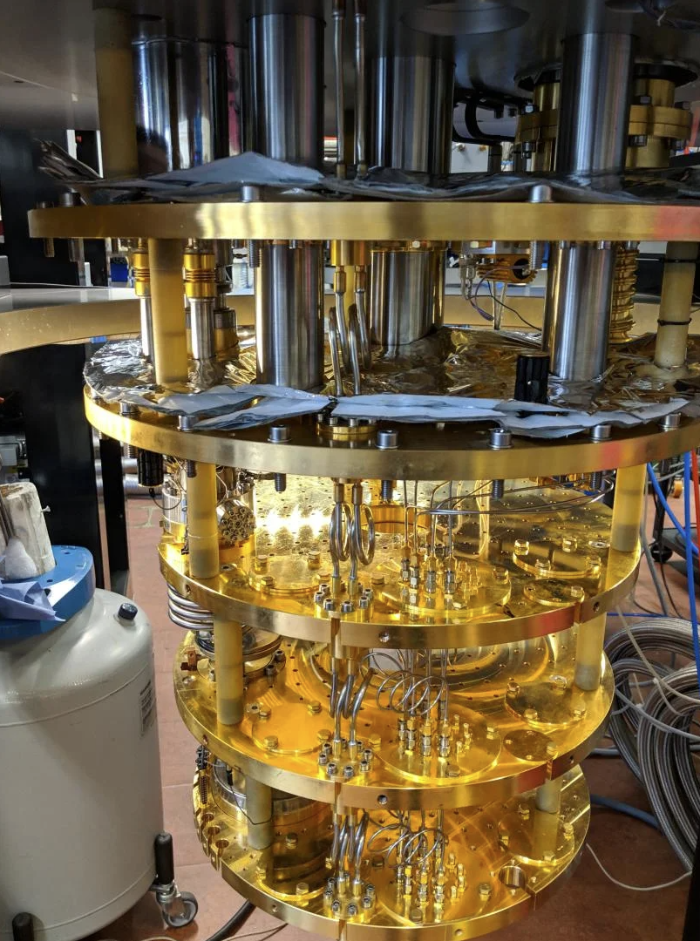Research on quantum simulators published in Nature Physics
Researchers use nanoscale electronic circuits to solve difficult physics problems by analogue computation
Simulating the properties of quantum matter is a challenging and sometimes intractable computational task for a standard digital computer. Instead, scientists have started to use highly-specialized analogue computers that work by analogy to the problem to be solved, sacrificing the generality of a programmable computer for enhanced performance at a single task. Circuits featuring quantum components can now be used in this way to solve quantum mechanics problems beyond the reach of classical computers.
New research published in Nature Physics by a collaboration involving UCD theoretical physicist Dr Andrew Mitchell and the experimental nanoscience group of Prof David Goldhaber-Gordon at Stanford University in the USA establishes nanoelectronic devices as a scalable platform for analogue quantum computation.
From analogue to digital…
The history of analogue computers goes back more than 2000 years to the Antikythera mechanism, an ancient artifact found in a shipwreck off the coast of a Greek island. The hand-powered clockwork device was able to make accurate astronomical predictions about the positions of the planets, the precessing elliptical orbit of the moon, and even the dates of eclipses, decades in advance – all this at a time far before the advent of programmable digital computers. The computation is done by simulating a model of the solar system using cogs representing the different celestial bodies: computing directly by analogy rather than by abstraction in computer code.
Fast-forward 2000 years, and today we have vastly powerful digital supercomputers that can execute any program at lightning-fast speeds, with machines exceeding a billion-billion operations per second coming online for the first time in 2022.
| Yet there remain many tasks that are simply too complex for even our fastest digital computers. Such tasks belong to a class known as “NP-hard” problems. An important example in the physical sciences is the solution of the Schrödinger Equation describing quantum mechanical systems involving many interacting quantum particles. This is required for the accurate simulation of complex materials such as the high-temperature superconductors, whose constituent atoms and electrons are governed on the nanoscale by the laws of quantum mechanics. These problems are hard to solve because the computing time and memory requirements grow exponentially with the number of particles involved, meaning that brute-force numerical calculations for realistic models are far beyond current capabilities. Many fundamental questions in physics therefore remain open. But perhaps digital computers in the future will one day be fast enough to solve such problems? In fact, this will never be the case: classical computers will always eventually run into the exponential complexity wall. Additionally, the miniaturization of electronics has now gone about as far as it can; Moore’s Law, predicting the year-on-year speedup of computers, is finally failing, as transistor dimensions reach a few nanometers. So does this mean that fundamental mysteries of the quantum universe will forever be uncomputable? Scientists think they’ve found a workaround – by taking inspiration from the ancient Greeks and their analogue computers. |
The experimental setup where Pouse and colleagues studied their "two- island" quantum simulator device. (Image credit: Winston Pouse/Stanford University) |
|
And back to analogue… with a quantum twist
The technological and engineering advances driving the digital revolution have brought with them the unprecedented ability to control matter at the nanoscale. This in turn is bringing about a second quantum revolution, in which unique quantum properties such as superposition and entanglement can be utilized as a resource to provide a decisive advantage over classical technologies. Ground-breaking experiments on entangled quantum states that pave the way to future quantum technologies were just this year recognized by the 2022 Nobel Prize in Physics. Ultimately, the goal is an all-purpose programmable quantum computer. But since existing prototypes do not currently have anywhere near the required power to solve many of the open problems in physics, an alternative approach has been developed for the near-term. An emerging trend in recent years has been to use quantum devices to solve quantum problems – bespoke analogue computers that solve specific models in quantum physics by leveraging the inherent quantum mechanical properties of its nanoscale components.
Research just published in Nature Physics studies a recently-developed architecture for quantum devices involving hybrid metal-semiconductor components incorporated into a nanoelectronic circuit. The experimental nanoscience group led by Professor David Goldhaber-Gordon based at Stanford University in the USA built and operated the device, while the theory and modelling was done by Dr Andrew Mitchell at University College Dublin in Ireland. The design paradigm they used overcomes previous limitations of simpler semiconductor quantum-dot devices, because multiple hybrid components can be fabricated to behave identically. This is important for analogue simulation of quantum materials, where each of the electronic components in the circuit is a proxy for a site in the crystal lattice being simulated, and behaves like an ‘artificial atom’. Just as different atoms of the same type in a material behave identically, so too must the different electronic components of the analogue computer. The new design therefore offers a unique pathway for scaling up the technology from individual units to large arrays capable of simulating bulk quantum matter. Furthermore, new microscopic quantum interactions can be engineered in such devices. The work is a step towards developing a new generation of scalable solid-state analogue quantum computers.
 |
 |
 |
| Micrograph image of a nanoelectronic quantum circuit comprising two coupled hybrid metal-semiconductor islands (center), acting as an analogue quantum computer. Charge stability diagram obtained by electronic conductance measurements in the experiment (right), match proof-of-principle simulations for the fundamental quantum mechanical model being simulated (left). | ||
These advances were exploited by the researchers to realize an entirely new state of quantum matter in the lab. Their proof-of-principle device is the first to achieve this type of quantum-coherent coupling between two electronic components, and performs analogue quantum computation for a model of two quantum spins connected by complex quantum interactions. By tuning electrical voltages on the device, a new ‘quantum critical point’ was observed, in which the electrons in the circuit move collectively, rather than independently. Critical points underpin the complex physics emerging at the boundary between two different phases, and are believed to be responsible for high-temperature superconductivity and other unusual phenomena in real materials. In this case, the critical point appears at the intersection of three phases, and leads to an exotic new state: a so-called ‘Z3-parafermion’ in which particles carry only 1/3 of the fundamental electronic charge. These elusive states have been proposed as a basis for topological quantum computation, but never before created in the lab in an electronic device.
Extending from two coupled components to an array, such tuneable quantum devices could help us understand how nanoscale interactions between many quantum particles conspire to produce the physical phenomena we observe on the macroscale in everyday life. After all, the classical world that is so familiar to us is but an illusion, with a frenzy of quantum activity bubbling away just beneath the surface. The secrets of the quantum underworld may finally be unlocked with the help of these new analogue quantum computers.
Dr Andrew Mitchell is a theoretical physicist at University College Dublin and is the Director of the UCD Centre for Quantum Engineering, Science, and Technology (C-QuEST).
Read more at:
“(opens in a new window)Quantum simulation of an exotic quantum critical point in a two-site charge Kondo circuit” by Winston Pouse, Lucas Peeters, Connie L. Hsueh, Ulf Gennser, Antonella Cavanna, Marc A. Kastner, Andrew K. Mitchell and David Goldhaber-Gordon. Published in Nature Physics (January 30th 2023)
(opens in a new window)https://www.nature.com/articles/s41567-022-01905-4
